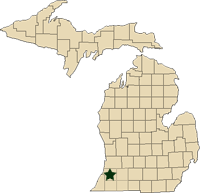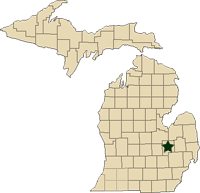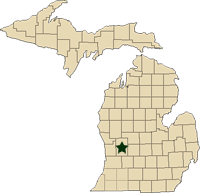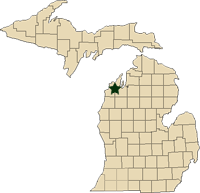Michigan apple harvest reports – September 19, 2012
The effects of the warmest year on record on Michigan apple maturity.
General comments
Great variability in maturity continues to be reported across Michigan’s apple growing regions. There are great differences in maturity block-to-block and even in fruits on the same tree. Fruit size and color are less than a normal year. Fruit finish is also less than perfect due to frost marks, with the exception of Golden Delicious, which is surprisingly very nice looking for 2012. Brix levels of all varieties tested by the Michigan State University Fruit Team members across the state continue to be at very high levels. Fruit drop continues to be higher than expected given the light crop set.
2012 is certainly a year for the record books – earliest green tip over recorded, record-warm temperatures and a drought. At the end of the regional reports, MSU’s Randy Beaudry has summarized the effect that a warm year has had on the maturity of Michigan apples
Southwest Michigan - Bill Shane,
Michigan State University Extension
Golden Delicious ‘Smoothee’ picked on September 17 at the Southwest Michigan Research and Extension Center showed average firmness of 16.8 compared to 18 lbs. for last week. The target firmness for long-term controlled atmosphere storage for Golden Delicious is 17 lbs. Starch conversion index for this site was 2.8 compared to 3.0 for last week, and 1.2 for the week before that. Skin color of Golden Delicious was breaking on most fruit. Brix tested at 17.3 compared to 16.1 for last week.
Red Delicious ‘Red Chief’ strain, also from SWMREC on September 17, tested 19 lbs. flesh firmness compared to last week’s average of 17 lbs. Starch conversion this week tested 3.2 compared to 4.4 for last week and currently with brix of 11.8. We are seeing some variability of maturity among these Red Delicious. Last week, our samples had some moldy core, which may have resulted in more mature readings than this week’s samples. Predicted peak harvest date for 2012 Red Delicious for Berrien County was September 8.
We tested Fuji (main season variety Autumn Rose) for the first time this week. Fuji was very firm at 20.1 lbs. with starch index of 3.4 and brix of 14.8. Background color of Fuji was still relatively green.
Southeast Michigan - Bob Tritten,
Michigan State University Extension
Apple harvest is very different this year, even for the few growers with a crop to harvest. Growers are harvesting many strains of Red Delicious and are starting to harvest Idared. Fiji is not ready yet, but is closer than what growers might expect for this third week in September. Golden Delicious and Jonagold harvest finished last week.
Overall, fruit finish is a challenge this year on most varieties except Golden Delicious that had excellent finish. Brix levels are generally higher this year than most years. Finally, apple cider tastes very good this year with a sweet, rich, full-bodied flavor, even though most cider makers do not have their normal mix of varieties to blend this season.
West Central Michigan - Phil
Schwallier and Amy Irish-Brown, Michigan State University Extension
Jonagold are ready for harvest now when red color is adequate. Red Delicious are also ready, but not quite as far along as Jonagold. Reds will still be excellent early next week. Romes are still immature, but are approaching long-term CA storage. We expect them to be ready in about one week. Romes have very low ethylene and low starch index.
Fuji are still immature and in the same state as Romes. I expect Fuji to be ready in about two to three weeks.
Northwest
Michigan – Nikki Rothwell, Michigan State University Extension
Growers are moving quickly through apple harvest with the light crop this year. The most notable characteristic of 2012 fruit is the high brix values with all varieties. Growers are hoping for more color in this coming week. Most Galas are off the trees at this time and no samples were available for testing. We were still able to find some McIntosh for testing – a bit of a surprise – and these fruit still exhibited variability among the samples. Firmness in Macs is higher than anticipated for this time in the season, and starch removal numbers varied from 3 to over mature at 8.
Honeycrisp harvest has begun this week, but color is variable even on trees that have been pruned to provide adequate sunlight. Firmness remains constant in this variety, and all starch removal indices show this variety is almost at peak ripeness. Jonagold brix levels are also high with some fruit coming in at 17 and 18. Color on Jonagold is all over the board, but starch removal is fairly constant in the 5 to 6 range.
Golden Delicious are still a ways off before harvest, but brix levels are up into the 13 to 15 range. We tested a sample of each of the later ripening varieties: Northern Spy, IdaRed and Romes. Northern Spies are the furthest along with starch removal readings ranging from 2 to 7 with an average of 4.3. This variety is still firm and has fairly high brix levels. Both Romes and IdaReds have some time to go before harvest; starch removal levels are still low.
Apple post-harvest laboratory comments – Randy Beaudry, MSU Department of Horticulture
The maturation and development of all apple varieties during the extremely warm 2012 season continues, with late varieties maturing two to three weeks ahead of their normal harvest schedule. In mid-September, we would normally be finishing off McIntosh in the southwest – we are now nearly finished harvesting Red Delicious. The same trend is apparent across the length and breadth of Michigan this year. The limited maturity data we have been able to generate this year suggests that the apple harvest will be complete about three weeks early.
To put the temperatures we have experienced in perspective, we can compare the number of cumulative days for which the temperature exceeded a high temperature, say 80 degrees Fahrenheit. Using temperature data from the Sparta Enviro-weather station, we would learn that last year (2011) yielded 56 growing degree days (GDD) above 80 F; in 2010, the previous hottest year on record in the United States, there were 52 GDD above 80; in 2009, there were 17; in 2008, there were 23; in 2007, there were 72. 2012 is now the warmest year on record; the Sparta Enviro-weather station had 113 growing degree days above 80 F!
Needless to say, apple fruit across the state are responding to these excessively high temperatures with early maturation. However, another concern is that different tissues within each fruit also respond to these high temperatures. Keep in mind that temperature affects the rate of cellular expansion in the fruit, the rate of respiration, the rate of transpiration and the rate of wound healing. This year, we have seen an unusually high incidence of excessively rough fruit surfaces, expanded lenticels, russeting and fruit cracking that are likely partly due to the warm temperatures in the orchard. Problems have been especially apparent on Minneiska, Gala and Honeycrisp, although, oddly, not so much on Golden Delicious.
Uneven growth of the fruit shoulders and calyx are linked to surface cracking, a feature that is also exacerbated by uneven water availability (water availability was an issue this year as well). High temperatures can alter the makeup of the cuticle and, as the fruit expands, its ability to stretch, resulting in small surface cracks that can contribute to russeting. Further, lenticels are, in actuality, wounds created by the death of cells around stomatal tissue in young fruits and subsequent wound-healing. Factors that influence wound healing, including some field applied chemicals, may migrate more readily at high temperatures, damaging cells directly or sensitizing them further to environmental stresses.
In any case, the lesson we may be learning is that we need to minimize chemical and environmental stresses that affect fruit finish during warm years to the fullest extent possible. In the eight of the top 10 hottest years that have occurred in the last 10 years, there is no reason to believe that the next few years will be substantially cooler. Perhaps this year can be used to help direct our focus on future crops, larger crops, where preserving fruit finish will be of significantly greater economic importance.
Go to the 2012 MSU apple maturity program and reports.



 Print
Print Email
Email



